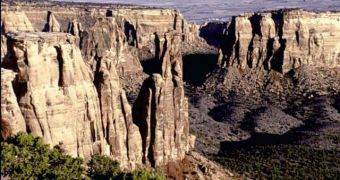A new device meant to change researchers’ way of understanding the evolution of Earth was recently tested by a group of scientists at the University of Florida.
Researchers say the device is of great importance for subsidiary studies of various natural phenomena, such as climate changes or extinction processes, as well as for oil-drillers, as it provides them with the best way to search for oil locations.
Scientists performing the test used the extensive numerical method for dating the fossil shells, in order to determine the functionality of the previously theoretical sequence stratigraphy, EurekAlert reports.
“Paleontologists and geologists are well aware of the fact that you should not take the fossil record at face value because you will then see changes through time that may not be meaningful,” declared Michal Kowalewski, a researcher at the Florida Museum of Natural History and co-author of the study.
„However, by using dating to quantify how the resolution changes through time, we can improve quality control on our data and develop better strategies for reconstructing the history of life more accurately.”
Sequence stratigraphy allows a detailed investigation into the composition of sedimentary rocks and their connection to one another. It also makes possible the estimation of the types of rocks in a certain region.
“I think what they're doing is groundbreaking in the sense that they're testing a model that is one of the most important models in sedimentary geology that has ever come down the pipe,” said Carlton Brett, a geologist at the University of Florida.
„As one who uses that model a lot and makes those assumptions about why we are getting shell beds offshore, the fact that they have put numbers on the tests gives us very good confidence that we're on the right track.”
The first direct chronological test of the sequence stratigraphy was detailed in a study published online in the journal Geology.

 14 DAY TRIAL //
14 DAY TRIAL //